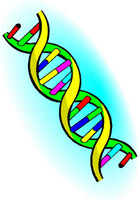
Worksheets and No Prep Teaching Resources
Reading Comprehension Worksheets
Life Science

Life Science
 Worksheets and No Prep Teaching Resources Reading Comprehension Worksheets Life Science |
 Life Science |
| edHelper's suggested reading level: | grades 6 to 8 | |
| Flesch-Kincaid grade level: | 6.41 |
|
Genes
By Cindy Grigg |

|
 1 Have you ever seen a cat with a litter of baby kittens when all the kittens look different? Each kitten may have different hair colors, markings, or eye colors. Why? Each kitten received a different combination of genes from its parents.
1 Have you ever seen a cat with a litter of baby kittens when all the kittens look different? Each kitten may have different hair colors, markings, or eye colors. Why? Each kitten received a different combination of genes from its parents. |
Create Weekly Reading Books
Prepare for an entire week at once! |
| Leave your feedback on Genes (use this link if you found an error in the story) |
 |
Life Science
|
 |
Science
|